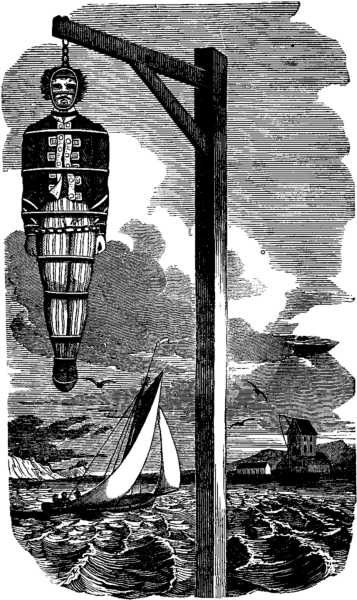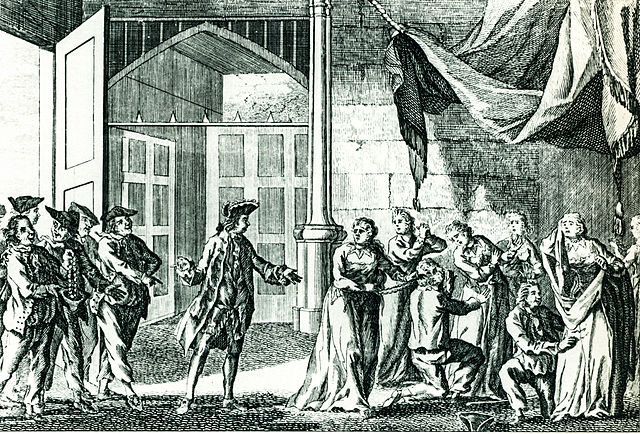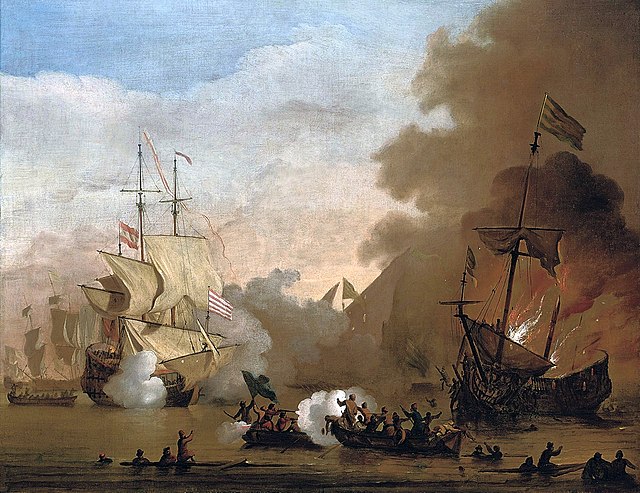A letter of marque and reprisal was a government license in the Age of Sail that authorized a private person, known as a privateer or corsair, to attack and capture vessels of a nation at war with the issuer. After capturing, the privateers could bring the case of that prize before their own admiralty court for condemnation and transfer of ownership to the privateer. A letter of marque and reprisal would include permission to cross an international border to conduct a reprisal and was authorized by an issuing jurisdiction to conduct reprisal operations outside its borders.
Copy of a letter of marque and reprisal issued by Maurice, Prince of Orange to Captain Johan de Moor from Vlissingen for South America, 1 June 1618, page 1
Drake viewing treasure taken from a Spanish ship, print courtesy New York Public Library
The body of Captain William Kidd hanging in a gibbet over the Thames, the result of confusion over whether Captain Kidd took prizes legally under a letter of marque, or illegally as a pirate.
A privateer is a private person or vessel which engages in maritime warfare under a commission of war. Since robbery under arms was a common aspect of seaborne trade, until the early 19th century all merchant ships carried arms. A sovereign or delegated authority issued commissions, also referred to as letters of marque, during wartime. The commission empowered the holder to carry on all forms of hostility permissible at sea by the usages of war. This included attacking foreign vessels and taking them as prizes and taking crews prisoner for exchange. Captured ships were subject to condemnation and sale under prize law, with the proceeds divided by percentage between the privateer's sponsors, shipowners, captains and crew. A percentage share usually went to the issuer of the commission.
East Indiaman Kent (left) battling Confiance, a privateer commanded by French corsair Robert Surcouf in October 1800, as depicted in a painting by Ambroise Louis Garneray.
Woodes Rogers' men search Spanish ladies for their jewels in Guayaquil, 1709
An action between an English ship and vessels of the Barbary corsairs
Bermuda Gazette of 12 November 1796, calling for privateering against Spain and its allies during the 1796 to 1808 Anglo-Spanish War, and with advertisements for crew for two privateer vessels.







